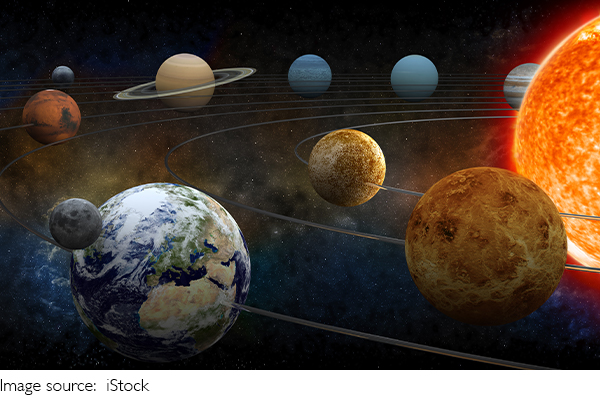The Universe’s Hidden Side

When you look up at the night sky, you’re seeing stars, galaxies, and glowing clouds of gas. But here’s the twist: all that dazzling stuff makes up less than 5% of the universe.
The rest is made of mysterious players we can’t directly see—dark matter and dark energy. For Lykkers, this guide unpacks what scientists actually know, what they’re still figuring out, and why it all sounds like a cosmic mystery novel.
Dark Matter—The Invisible Glue
Let’s start with dark matter. Despite its name, it isn’t spooky—it’s just invisible and really hard to detect. Yet, without it, galaxies might not even hold together.
Why We Think It Exists
Astronomers observe that stars in galaxies orbit their centers at speeds that cannot be explained by the gravitational pull from the visible matter alone, such as stars, gas, and dust. According to Newtonian gravity, if only visible matter existed, stars further from the galactic center should move slower, similar to how planets orbit the sun.
However, observations show that the rotation speeds remain nearly constant or "flat" even far from the center. This discrepancy indicates there must be additional unseen mass exerting gravitational force to hold the galaxy together. Scientists call this unseen mass "dark matter."
Dark matter does not emit, absorb, or reflect light, so it cannot be directly observed, but its gravitational effects on stars and galaxies provide strong indirect evidence of its existence. This dark matter forms a halo around galaxies, creating the extra gravity needed to explain the flat rotation curves observed.
What It’s Not
Dark matter isn’t stars, planets, or clouds of gas. It doesn’t emit or absorb light, which is why telescopes can’t pick it up. It’s also not made of the same ordinary particles we’re familiar with.
How Much of It There Is
Dark matter makes up about 27% of the universe. That’s far more than the matter we can see. Think of it as the invisible scaffolding holding galaxies in place.
How Scientists Hunt It
Even though we can’t see dark matter directly, scientists design experiments deep underground to catch its rare interactions. They also use giant telescopes to map how its gravity bends light from distant galaxies—a trick called gravitational lensing.
Fun Analogy
Imagine you walk into a room and see curtains moving, but no one is there. Something invisible must be causing the shift. That’s dark matter—it makes galaxies move in ways we can’t explain with just visible stuff.

Dark Energy—The Cosmic Accelerator
If dark matter holds things together, dark energy pushes them apart. It’s the mysterious force behind the universe’s accelerating expansion.
The Big Surprise
Back in the 1990s, astronomers expected the universe’s expansion to be slowing down due to gravity. Instead, they discovered it’s speeding up! The only explanation? Some unknown energy is fueling this acceleration—hence, dark energy.
How Much There Is
Dark energy dominates the universe, making up nearly 68% of everything. That means most of the cosmos is driven by something we don’t even fully understand.
What It Might Be
Scientists do not yet know exactly what dark energy is, but it is understood to be a mysterious form of energy that permeates all of space and drives the accelerated expansion of the universe. One leading idea is that dark energy is an intrinsic property of space itself, often modeled as the cosmological constant—a constant energy density filling empty space uniformly. Another idea is that dark energy could be a dynamic energy field spread across the universe, sometimes referred to as "quintessence," whose density may change over time.
Regardless of its nature, dark energy exerts a repulsive gravitational effect that acts like a cosmic engine, pushing galaxies farther apart and causing the universe's expansion to speed up. Dark energy currently makes up about 68-70% of the total energy content of the universe. Despite its profound impact on the cosmos, dark energy does not interact with light or ordinary matter in detectable ways, making it very challenging to study directly.
Why It Matters
Dark energy doesn’t just shape the present—it determines the future of the universe. If it keeps pushing, galaxies will drift so far apart that night skies could eventually grow emptier and darker.
Fun Analogy
Think of the universe as a giant loaf of bread baking in the oven. Dark matter is like the invisible yeast that holds the dough together, while dark energy is the heat making it rise faster and faster.
Dark matter and dark energy may sound mysterious, but they’re central to understanding the cosmos. Dark matter acts like hidden glue, holding galaxies together and shaping cosmic structure. Dark energy, on the other hand, fuels the universe’s accelerating expansion. Together, they make up about 95% of the universe, even though we can’t directly see them.
For Lykkers, the key takeaway is this: the universe is mostly invisible forces working behind the scenes. And while we don’t yet have all the answers, exploring these mysteries keeps science exciting, humbling, and endlessly full of wonder.


